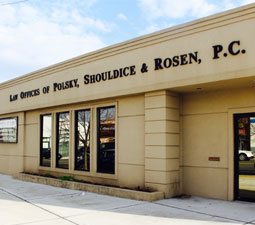Not all work injuries are the result of a single trauma. As a queens NY construction accident lawyer from a firm like Polsky, Shouldice & Rosen, P.C. can explain, repetitive motion injuries affect connective tissues, such as ligaments and tendons. Small tears can develop in these tissues due to mechanical fatigue. In many cases, the tissue is still placed under stress before the tissue has had a chance to repair itself, and dysfunction and pain are the cumulative effects.
Generally speaking, work-related repetitive motion injuries qualify for Workers' Compensation just as those resulting from a singular trauma do. However, some states place limitations on these types of injuries, or require you to meet higher standards to prove that they are work-related. Because it is more difficult to prove that repetitive motion injuries resulted from work, employers or insurance companies may be more likely to deny the claim initially.
Here are some repetitive motion injuries that are often work-related.
1. Bursitis
A bursa is a small sac of fluid that is found at a joint. Its function is to cushion the bones and help them to slide past one another, facilitating movement of the joint. Bursitis can occur due to repetitive motion of the joint or pressure on it due to poor posture.
2. Carpal Tunnel Syndrome
Carpal tunnel syndrome affects the median nerve, which runs from your neck down your arm into your first three fingers. To get to the hand and fingers, the median nerve passes through a space in the bones of the wrist called the carpal tunnel. Pressure on the wrist causes the soft tissues surrounding the carpal tunnel to swell, putting pressure on the median nerve and causing numbness, tingling, and weakness of the hand.
Carpal tunnel syndrome is associated with typing and clerical positions, yet research fails to demonstrate a clear link between the two. The link between work activities and carpal tunnel is clearer for workers in factories, meatpacking plants, and other places where manual labor is performed. Nevertheless, clerical work may cause repetitive motion injuries of the hands, wrists, and fingers that, while they may qualify as carpal tunnel per se, can be just as debilitating.
3. Tendonitis
Tendons are the bands of fibrous tissue that connect the muscles to the bones and allow for motion. Forceful exertion, awkward positions, vibration, frequent overhead reaching, and repetitive motions, in general, can all cause micro-tearing of the tendons, resulting in the pain and inflammation of tendonitis. Also referred to as tendinitis, it can occur in any area of the body. Common sites of tendonitis include the elbow, knee, and shoulder.
If you have a work-related repetitive motion injury, you have the right to pursue compensation even if your claim is denied initially. Find out how an attorney may be able to help you today.


